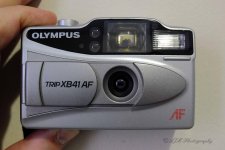The main point in Zack' definitions in the video clearly seemed to be him pointing out that a 2x film size was always in fact significant, but "only" 1.5x size was not (to him now). I think the degree of that difference might be debatable. When limited, every little bit helps.

I did 35mm darkroom work for years, much of it Nikon F work with Nikkor lenses, usually striving for finest grain instead of fastest speed, and I
always felt very limited by enlargements to 8x10 inch prints. Just how life was... 35 mm size simply did not have the quality for much enlargement, not like even medium film had. Even the cheapest Brownie box cameras used medium film, and certainly wedding photogs did (they hoped to sell prints). That medium film is roughly 2x larger than 35mm.
Users today don't print much (if at all in some cases). Video screens only show tiny images (resampled smaller to at most about 2 megapixels size). 900x600 pixels will print wallet size. 1920x1080 pixels would print about 6x4 inches at 300 dpi. But large prints on paper need large images, and any cropping certainly bites into that. Including DX cropping.
Enlargement is affected by BOTH pixels and sensor size in mm. The original mm (the original image size created by the lens) is what needs the enlargement, pixels merely facilitate printing it. The lens resolution is WHAT we are enlarging (when enlarging DX 24 mm to about 200-250 mm print size). Enlargement directly reduces the lens resolution, proportionately in degree. We just don't create large prints very often anymore to realize this.
Regarding 1.5x, every little bit helps.

But larger sensors are not needed on the video screen, or for web images.

